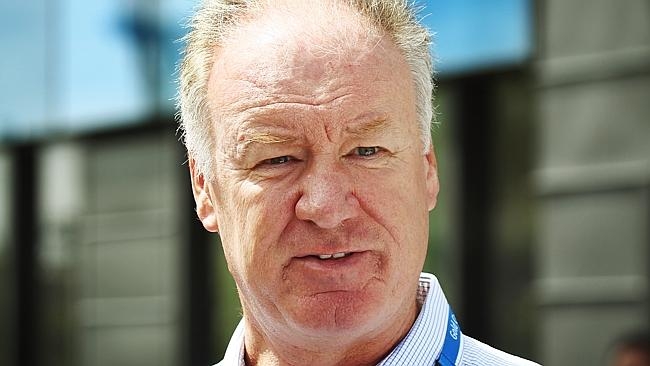
GOLD Coast Health will not bother checking the rest of the 48,000 X-rays in its reporting scandal despite finding “significant abnormalities” had been missed by doctors for several patients.
Instead the organisation will turn its attention to 15,000 unreported films dating back to 2012 because no patient has “come to harm” so far as a result of the investigation.
About 25,000 films from September last year deemed high priority have been checked since the scandal was revealed in July.
Yesterday the board and chief executive Ron Calvert said they were comfortable with that result and the findings of an independent investigation ordered by the Director-General.
Of the 25,000 checked, about 2000 required further investigation.
Eleven patients were found to have a significant abnormality missed by the original clinician and nine are undergoing continued monitoring and follow up.
Numerous other patients were found to have missed abnormalities but these were “clinically minor” in nature, the report says.
The report also found the diagnostic imaging department had inadequate policies and procedures, slow systems and a poor culture, with radiology staff not reporting each day’s work on the same day.
However, yesterday the board said most of these issues had already been addressed since the scandal broke.
The investigators found that the decision to only report higher priority cases and look further back than September 2013 was appropriate.
A spokesman for Health Minister Lawrence Springborg said that in the end Gold Coast Health were required to meet a 100 per cent reporting rate.
The service has since been publishing reporting data online – an initiative now being rolled out across the state – and has achieved a 100 per cent reporting rate.
Investigators Dr Robert Herkes and Dr Paul Sprague wrote the organisation’s decision to only report higher priority cases and look further back than September 2013 is appropriate.
Mr Calvert said in light of the “positive outcome” they did not want to repeat the exercise to cover the balance.
“Obviously there’s not really much point,” Mr Calvert said.
“We’d rather direct our attention to this longer standing situation and that’s the advice of our clinicians.”
In July Mr Calvert allocated $1.4 million to a Melbourne radiology company to outsource the reports.
Yesterday he said that would continue to happen, despite the report recommending outsourcing should be avoided.
“We recognise the point and we need to ensure we don’t rely on outsourcing because we need to train future generations of doctors, but the fact is it can be a useful tool to us if we’ve got capacity constraints,” Mr Calvert said.
Board chair Ian Langdon was adamant the historical problem was not a resourcing issue and commended the organisation.
A REPORT into an X-ray checking scandal on the Gold Coast has found “significant” numbers of X-rays went unreported — more than 200,000 in four years.
On Thursday, Queensland Health released the report on the investigation into the reporting of radiology services at the Gold Coast Hospital and Health Service.
The report slammed the reporting rate in the region and found countless reviews into the issue had been ignored and recommended widespread changes to workflows and hospital policies in a bid to fix the problem.
It found the problems dated back to at least July 2011.
“There were significant numbers of patients whose radiology plain X-ray films were
unreported, which exposed patients of GCHHS to increased clinical risk in relation
to timely diagnosis and treatment,” the report found.
“More specifically, the GCHHS Diagnostic Imaging Department failed to make a formal
report for over half of the patients who underwent diagnostic imaging studies between 1 July 2011 and 30 June 2014.
“That is, out of approximately 495,000 studies performed at GCHHS in the investigation period of July 2011 to June 2014, only 258,000 were formally reported.
“For those patients whose studies were reported, the reports were frequently not available within 24 hours.
“While the diagnostic imaging reporting rate has fluctuated, it has generally been lower than clinically acceptable and deteriorated further following the transition from the Gold Coast Hospital to the Gold Coast University Hospital and the new Diagnostic Imaging Department.”
The report was sparked after it was revealed in July that the X-rays of at least 48,000 patients were not followed up and reported on.
The report found that, as of June 2014, about 25,365 images relating to the “higher priority patient group” had not had formal reports.
It found of these, 2102 patients required further investigation, and eleven patients were identified as having a “significant abnormality” missed by the original clinician.
“Nine patients are, however, undergoing continued monitoring and follow up; numerous other patients were identified as having missed abnormalities but these were understood to be “clinically minor” in nature,” the report stated.
However it noticed but that “current clinical information is that they have not suffered any adverse outcomes as a result”.
Source: Gold Coast Bulletin
